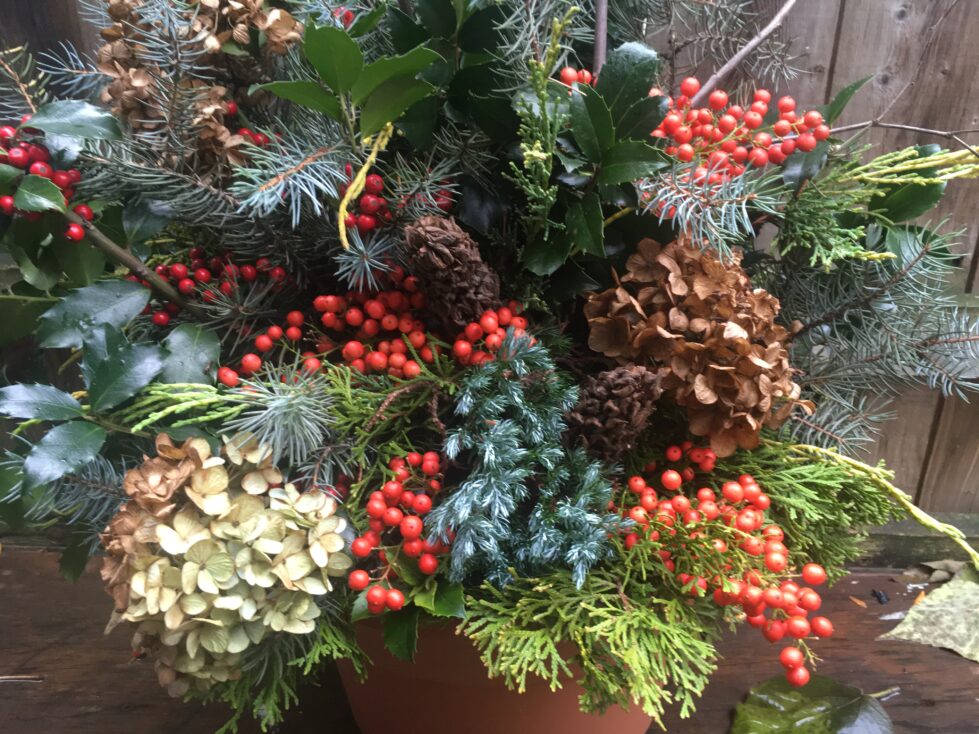Although much of the landscape is dormant this time of year, if you look closely, there are amazing textures all around you. Evergreen branches and winter berries are commonly used, and with a little more exploration, you can add interest to your arrangements from unexpected places. Use cuttings from your yard to create beautiful arrangements for outdoor planters, indoor centerpieces, wreaths, window boxes, and more. Below are some favorites, plus how to use these materials to brighten your surroundings!
Gather Your Material
Choose a pot, basket, vase, or other container of choice and estimate how much material you will need to fill it. An easy choice is the same container you used for your summer planters. Just remove the annual plants so you can insert the stems you are going to collect into the existing soil.
Then, grab a pair of pruners and a bucket and start gathering material from your yard. Look for anything with interesting colors, textures, or shapes. Begin cutting branches or stems in lengths longer than you think you may need. You can always shorten them later when you are making the arrangement.
If possible, cut branches from the back of the plant so you don’t affect the its appearance in the landscape. And be sure to use proper pruning techniques by cutting woody stems above a node (where a bud or branch begins) to avoid stubbing.
Start With Evergreens
Evergreens are often the base in winter arrangements, both indoors and out. Any evergreen branches are fair game. Spruce, pine, holly, and magnolia are favorites. Select broad-leaved and needle evergreens and a variety of colors. And of course, include any fruit or cones!

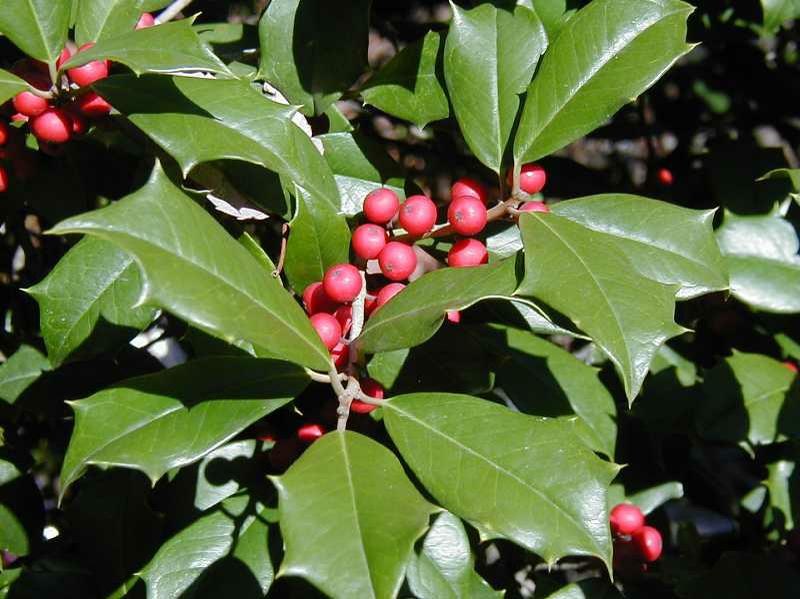
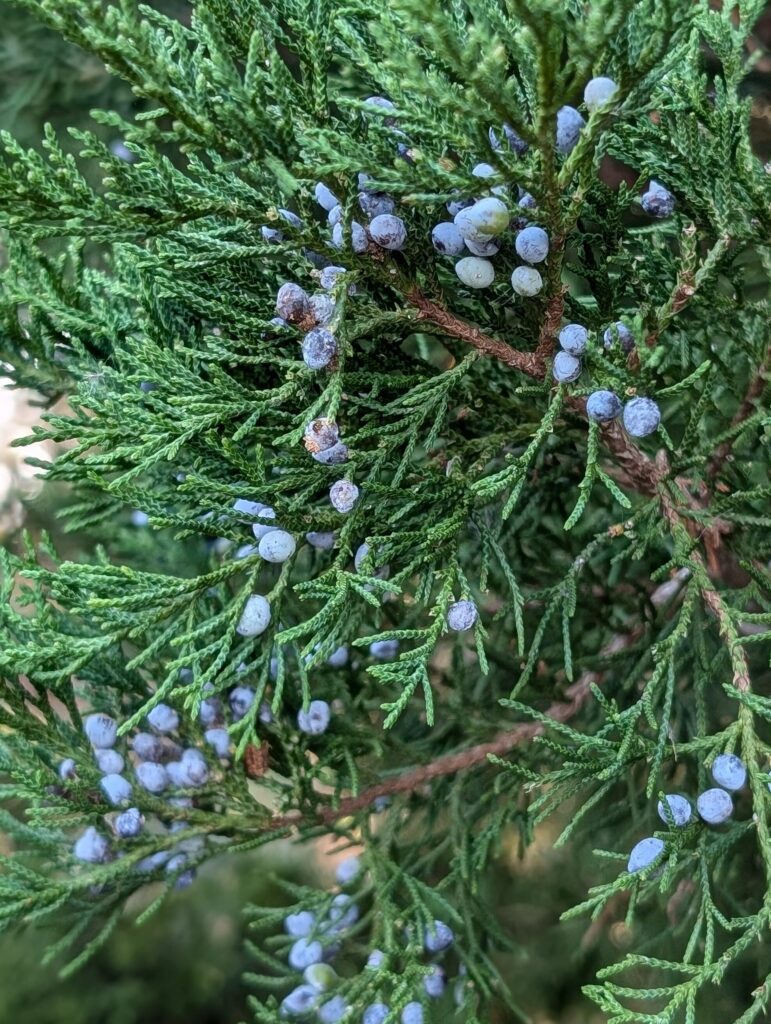

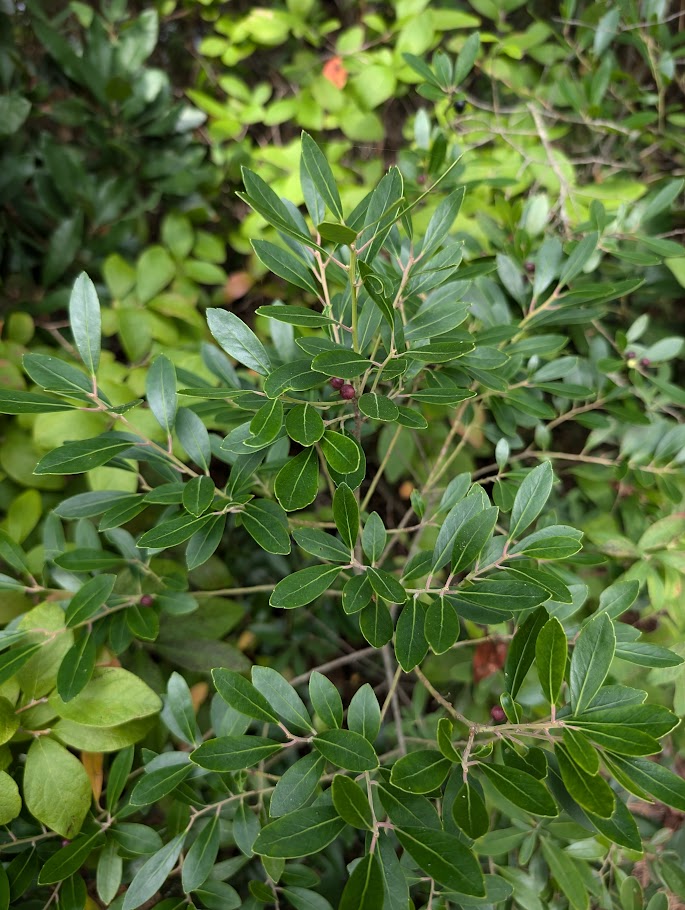
Mix different evergreen textures for a rich, full display, or select only one evergreen for a more contemporary look.
Use Berries and Dried Branches in Arrangements
Berries and branches provide arrangements with accents of color, texture, and/or height. Think about whether your display will be viewed up close or from a distance. For up close viewing, tiny details can be appreciated. Bunch berries and branches to make a bigger impact if your arrangement is viewed from far away.

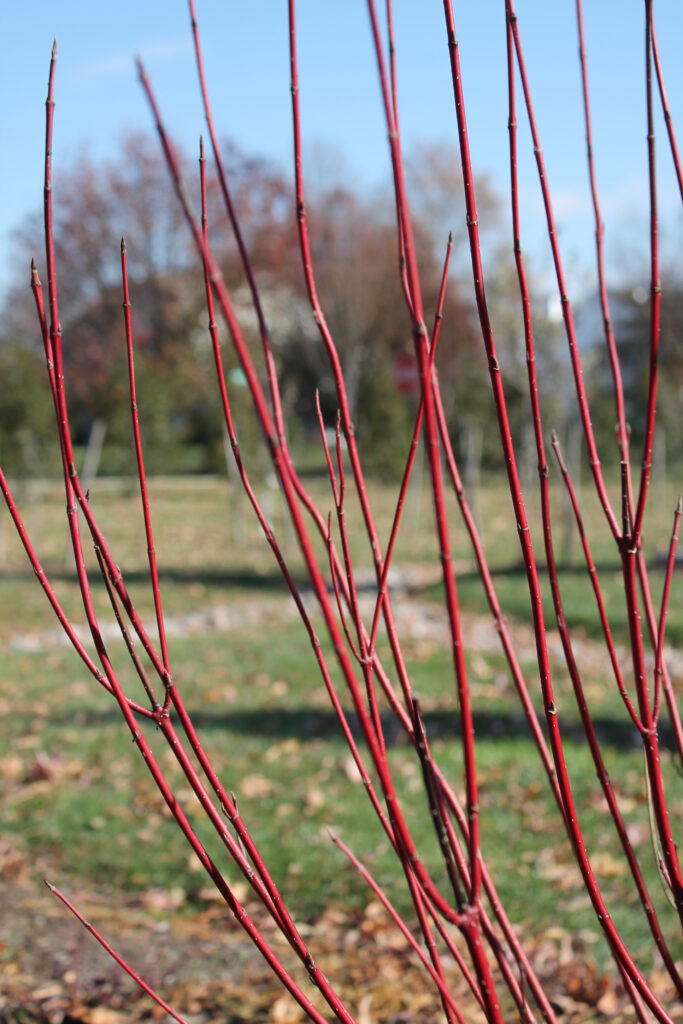

Red berries from winterberry holly or red chokeberry pop against evergreens. Branches from red and yellow twig dogwoods are colorful, and can also expand the shape of your arrangement by increasing the height or width. A walk through your own property may unveil unique berries, exfoliating bark, or curly branches.
Include Dried Flowers and Seed Heads
Dried flowers and seed heads can be used either as a focal point or as accents. If you leave perennials, seed heads, and grasses standing over winter for birds and insects, there should be plenty around. Some of the plants you harvest for arrangements may be more delicate than others, but have fun and try what looks intriguing to you!
To add soft golds and browns, add dry hydrangea blooms; in a protected area, they’ll last for months. Purple coneflowers not only provide seeds for birds, but can add punch throughout arrangements. Grasses such as Northern Sea Oats and Indiangrass can also add wonderful texture.
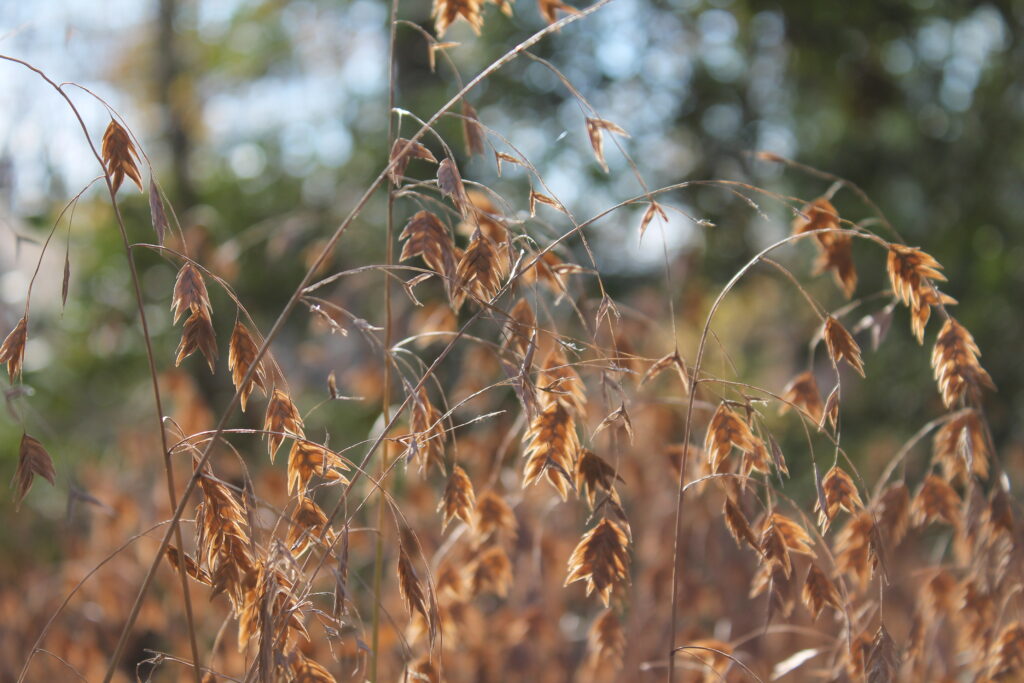
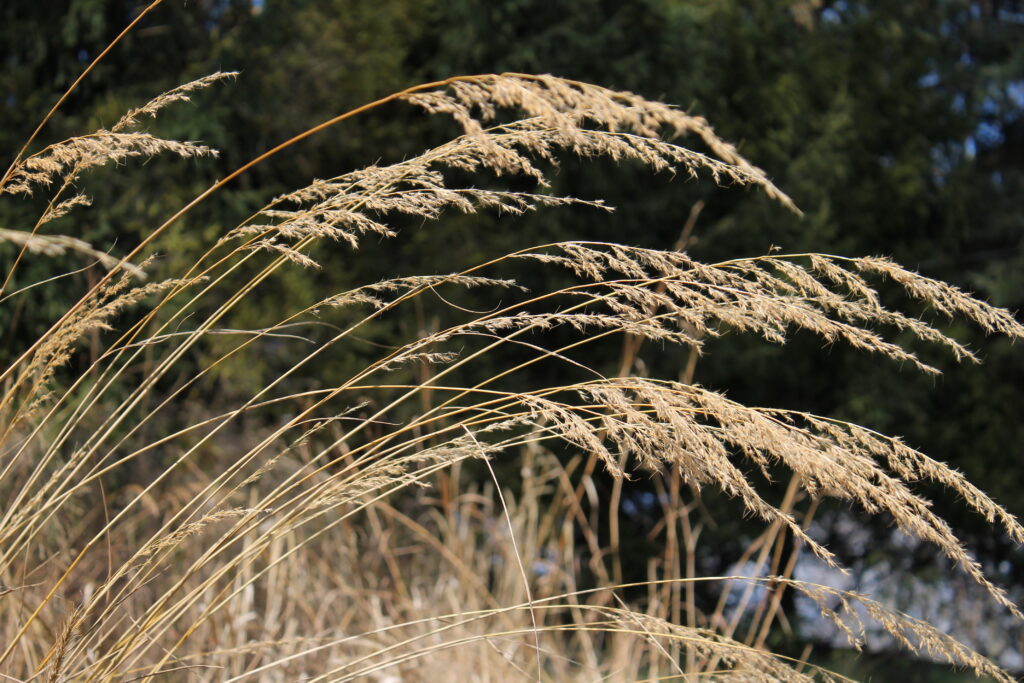
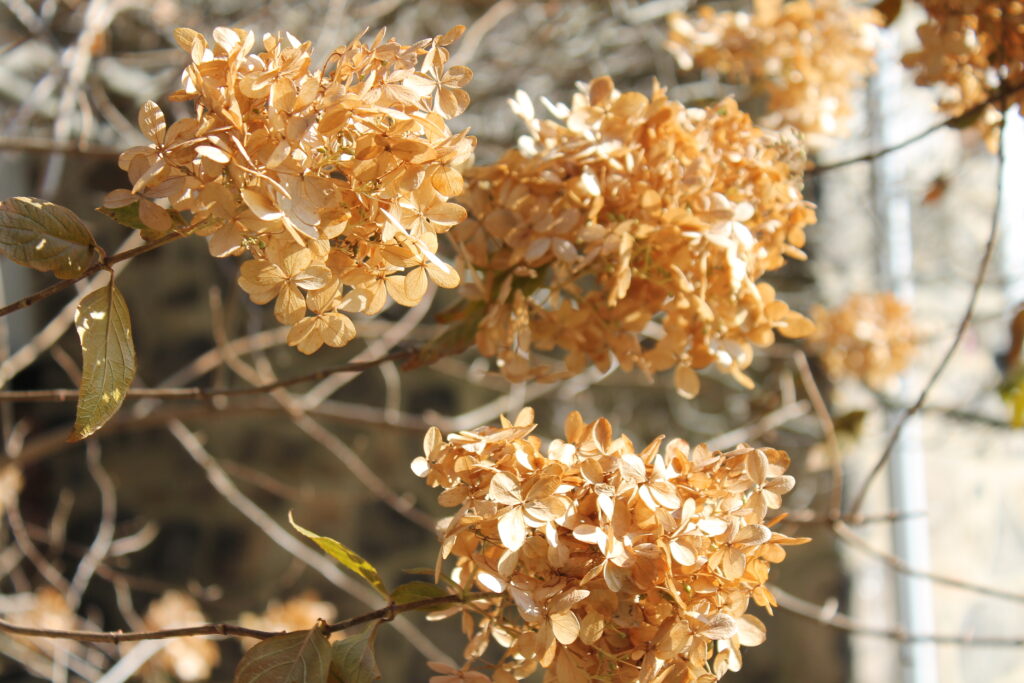

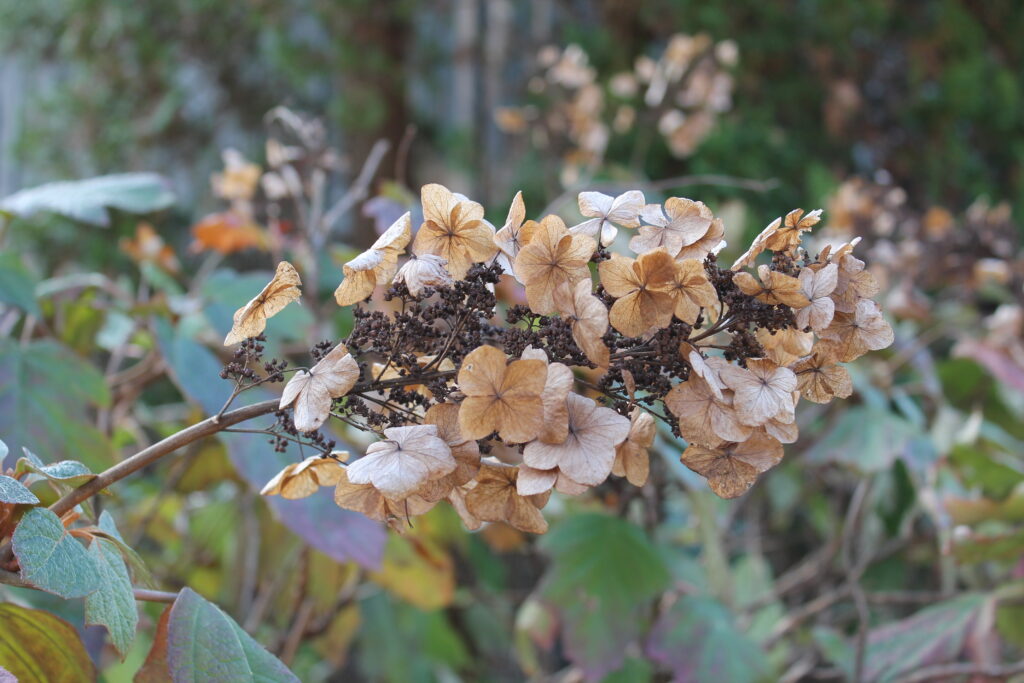
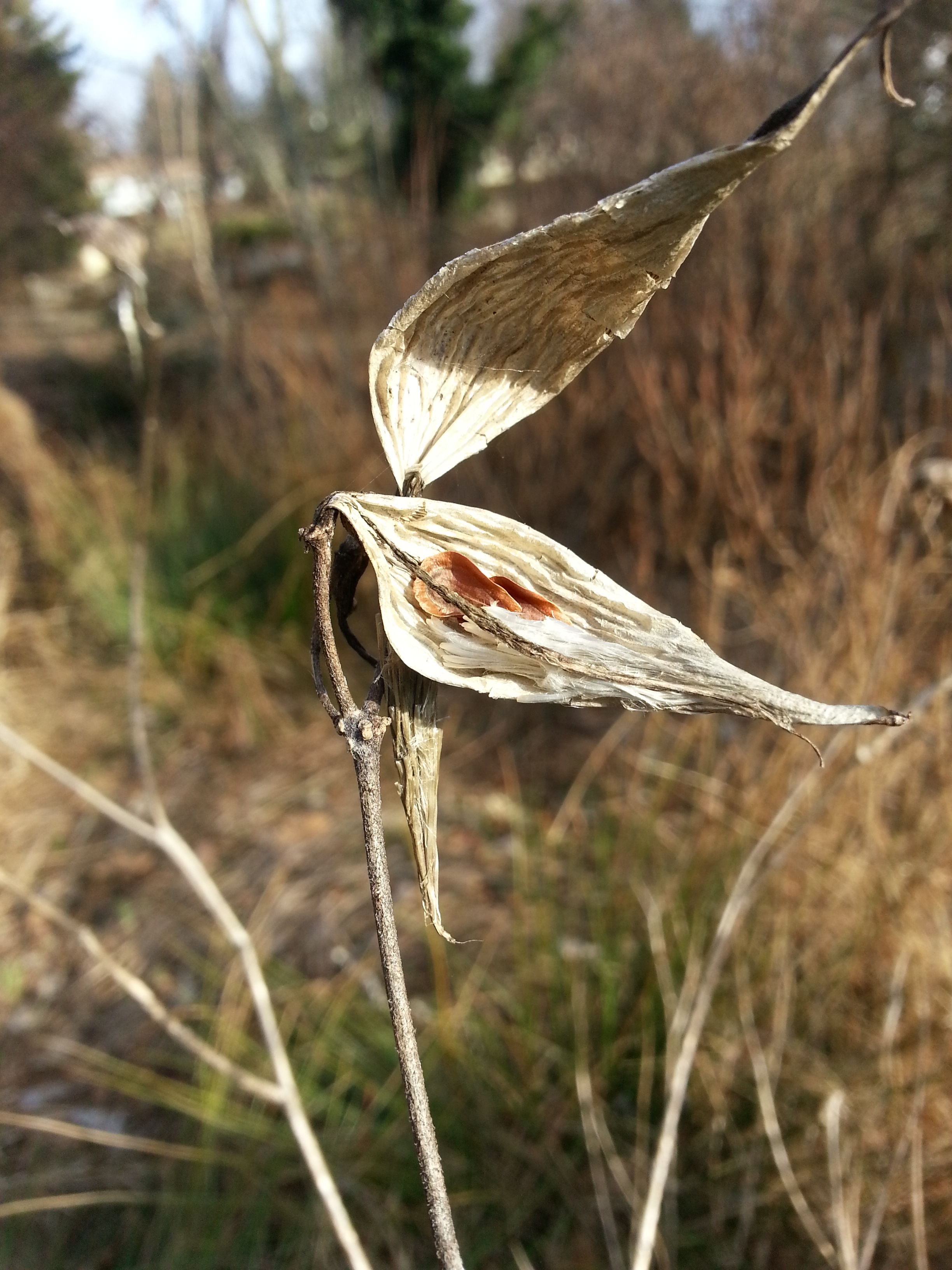
Create Your Arrangement
First, build your structure
Using your greens and larger branches, decide what the shape of your arrangement will be. Insert them into your container, and make any adjustments by pruning the length of the branches.
Add Primary Focal Points
Pick several eye catching branches and use them as the visual center and theme of the arrangement. Use odd numbers and make sure they look attractive from different views.
Add Secondary Visuals
Coordinate the secondary visuals with the focal points. Choose different shapes and sizes to build interest and spread these throughout the arrangement.
Add Filler Material
Select additional material to fill in any bare spots that are left in your arrangement.
Finish With Ornamentation
Although not neccesary, you may want to add ornamentation to your arrangement. Gourds, ribbons, lights, or holiday themed ornmanents add whimsy and fun to arrangements. Use your imagination!
For information about seasonal gardening, check out our Winter Gardening Tips for a More Successful Spring.

